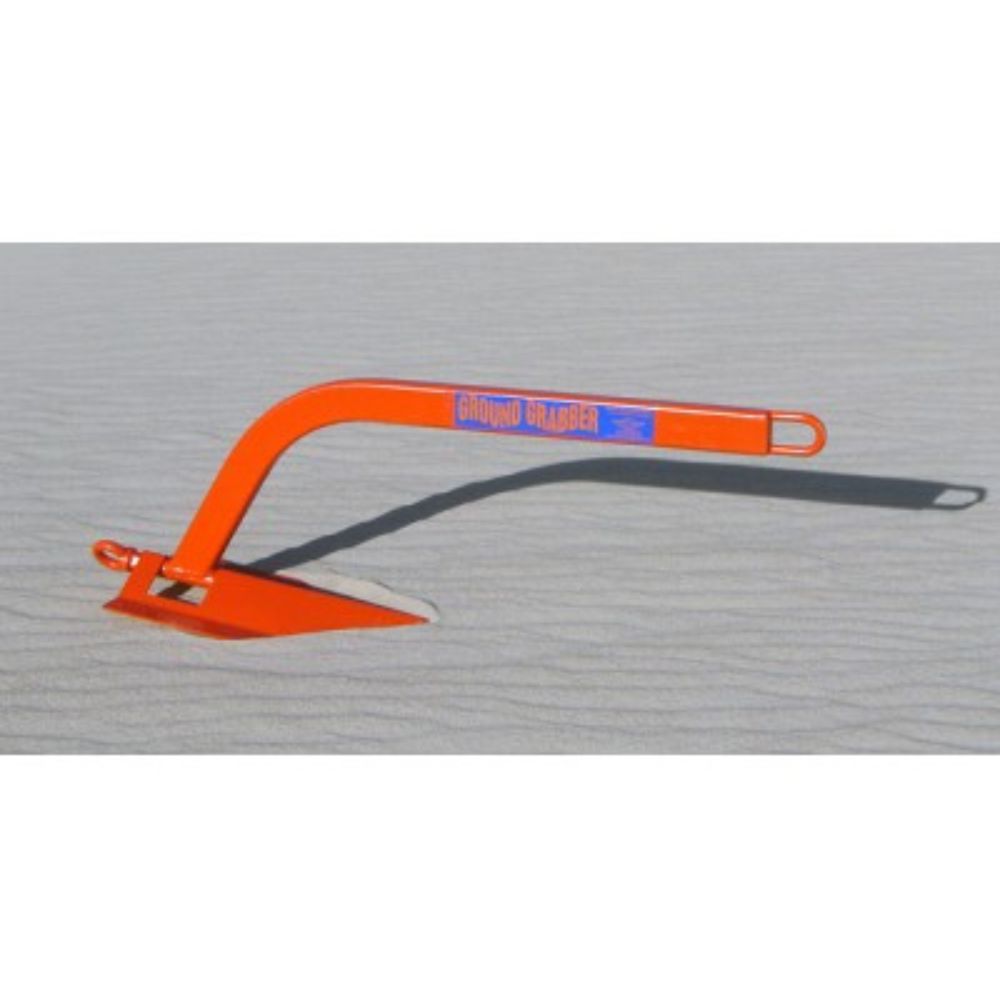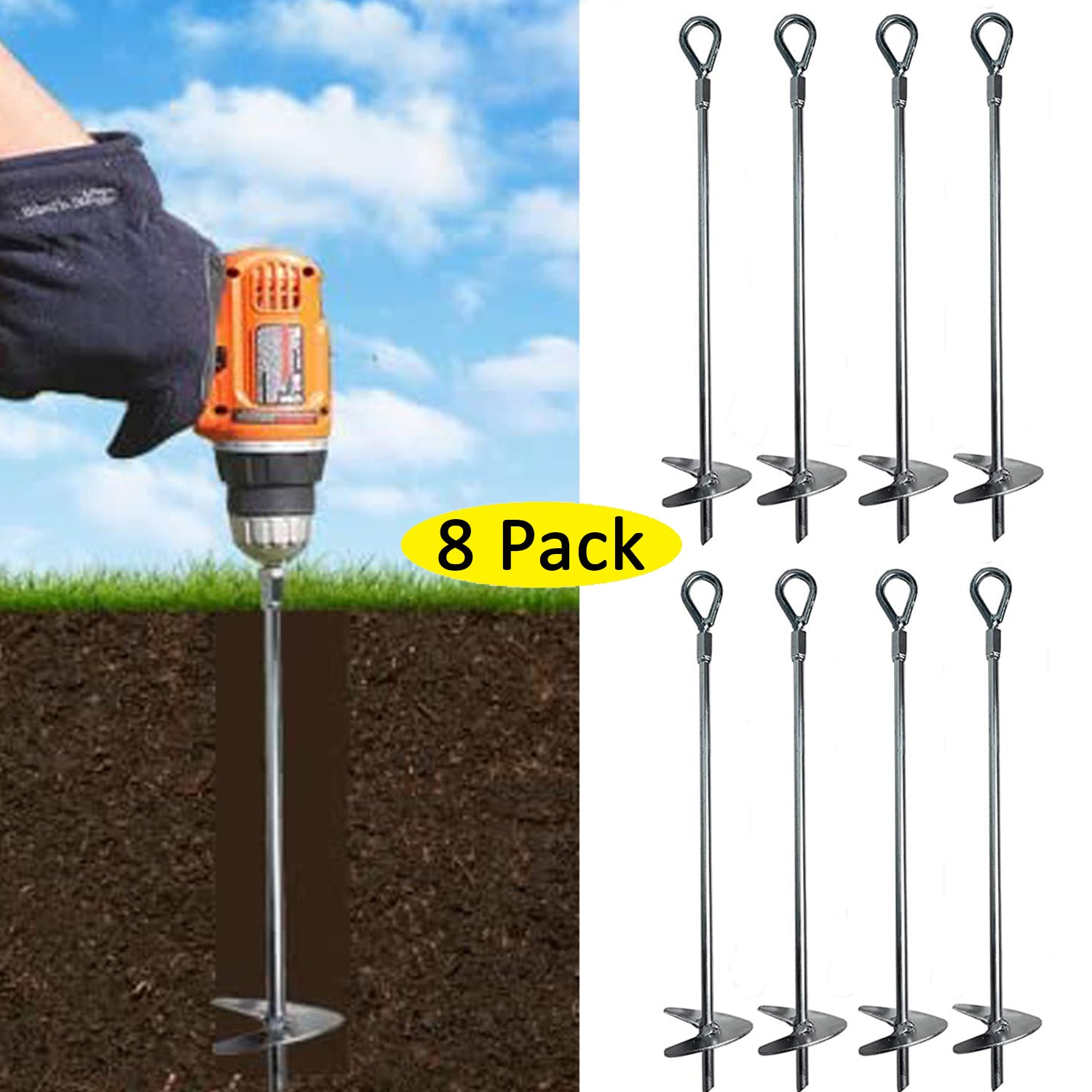Troubleshooting Guide: Manta Ray anchors Show Signs of Movement
Just How Sturdy Earth Anchors Job: A Comprehensive Guide to Soil Anchoring Solutions
Heavy-duty Earth supports play a vital function in supplying stability and assistance in various building and construction applications. By installing deeply right into the ground, they stand up to side and vertical forces efficiently. Different kinds of anchors deal with various dirt problems, making them versatile. Comprehending their mechanics and installation strategies is essential for making best use of performance. What elements influence their efficiency, and just how do they contrast to typical approaches? The responses may stun you.
Comprehending Durable Earth Anchors
Heavy-duty Earth anchors offer as crucial elements in different building and construction and landscape design jobs, providing security and assistance in challenging soil problems. These supports function by being embedded into the ground, where they stand up to vertical and lateral pressures. Their layout enables safe and secure add-on to frameworks, guaranteeing they remain secured against dirt movement or exterior loads.The efficiency of sturdy Earth supports mostly depends on the sort of dirt and the anchor's setup deepness. Proper installment strategies are crucial, as they determine the support's holding capability. Ecological elements, such as dampness and freeze-thaw cycles, can likewise affect performance.These anchors are often utilized in applications varying from safeguarding fences and preserving walls to stabilizing short-term frameworks during negative weather condition conditions. Recognizing the principles behind heavy-duty Earth anchors is important for specialists looking for to enhance the durability and safety of their jobs.
Sorts Of Heavy-Duty Earth Anchors
Numerous types of durable Earth supports are made to fulfill certain needs based on soil problems and task needs. Helical anchors, featuring screw-like blades, work in softer soils, using high lots capacities and simple installation. Driven supports, which are hammered into the ground, appropriate for rough surfaces and provide prompt tons assistance. Tie-back anchors are frequently made use of in preserving wall surface applications, enabling for side support by anchoring right into the ground at an angle. One more type is the cast-in-place anchor, perfect for concrete applications, as they are incorporated into foundations for enhanced stability. Dirt screw anchors are versatile alternatives that can be used in different dirt kinds, offering reliable stress and compression capabilities. Each type serves distinctive applications, making certain security and safety in building and landscape design tasks. Understanding these choices permits educated decisions in picking the proper Earth securing remedy.
The Mechanics of Soil Anchoring

Recognizing the mechanics of dirt anchoring needs an exam of various types of Earth supports and their installment techniques. Each anchor kind presents special qualities that affect its effectiveness in various soil conditions. Appropriate installment approaches are necessary for maximizing the securing system's security and performance.
Kinds Of Earth Anchors
Earth anchors, vital parts in soil anchoring systems, can be found in numerous kinds, each designed for certain applications and soil conditions. The most common types include screw supports, which are turned into the ground, giving solid side resistance. Helical anchors feature blades that enable for effective installation in different soil types, making them appropriate for both short-term and permanent applications. Driven supports, usually made from steel, are hammered into the soil and are efficient in thick or rough atmospheres. Auger supports use a helical layout to promote installment in softer soils. Ultimately, plate supports are composed of a level plate hidden flat, distributing lots over a bigger area, ideal for applications needing high tons capabilities in natural dirts.
Installment Strategies Discussed
Appropriate installation methods are crucial for the efficiency of soil anchoring systems. The process generally begins with site assessment, verifying the picked location can support the anchor's load. After establishing the correct support kind, proper opening depth and angle must be established. The installation entails driving the support right into the ground making use of customized tools, such as manual or hydraulic drivers, to accomplish finest embedment. Post-installation, tensioning the support is crucial to assure stability; this is frequently confirmed with tons testing. In addition, bordering soil problems must be kept an eye on to protect against variation. Adhering to these methods not only boosts the support's performance but likewise lengthens its lifespan, providing reliable support for various applications.
Applications of Heavy-Duty Earth Anchors
While durable Earth anchors are commonly connected with building and landscape design, their versatility includes a variety of applications throughout various industries. In civil engineering, they supply essential assistance for keeping wall surfaces, guaranteeing security in locations vulnerable to dirt erosion. The marine field utilizes these supports for safeguarding docks and marinas, avoiding activity brought on by tides and currents. Additionally, in the telecommunications market, sturdy Earth supports are substantial for maintaining cell towers and other high structures versus wind pressures. Agricultural applications additionally profit, as these supports can protect frameworks like greenhouses and livestock fence, ensuring they endure severe climate condition. Additionally, in eco-friendly energy jobs, such as wind ranches, Earth supports play an essential duty in safeguarding generator foundations, enhancing total safety and efficiency. This wide series of applications highlights the versatility and integrity of durable Earth anchors across numerous areas.
Advantages Over Traditional Anchoring Approaches
Although standard anchoring techniques have long been trusted for security, heavy-duty Earth supports provide considerable advantages that boost performance and efficiency. One significant advantage is their superior load-bearing capability, which enables them to stand up to better forces without failure. This strength makes them optimal for demanding applications, such as in construction and energy installations.Additionally, sturdy Earth supports are developed for much deeper installment, giving higher stability image source in numerous dirt problems, including loosened or sandy soils. Their resistance to corrosion and environmental aspects assures a much longer life expectancy and lowered upkeep costs contrasted to standard methods.Moreover, these anchors can be set up with very little disruption to the surrounding area, maintaining the integrity of the landscape. Generally, sturdy Earth anchors offer a trustworthy and efficient service for securing needs, surpassing the constraints typically related to typical anchoring techniques.
Installment Refine and Finest Practices
The installation procedure for dirt anchoring solutions starts with thorough prep work and website assessment to ensure peak performance. Following this, a detailed setup overview supplies clear instructions for effective application (construction site anchors). Sticking to these ideal practices is crucial for accomplishing trusted and durable anchoring outcomes
Prep Work and Site Analysis
Effective prep work and thorough site analysis are vital action in the installment of soil anchoring options. Before setup, the soil kind need to be assessed to identify its bearing capacity and viability for securing. Carrying out a geotechnical study can provide essential info concerning dirt make-up, moisture degrees, and prospective ground activity. In addition, recognizing existing structures, vegetation, and utilities is important to avoid interference during installment. The location should be cleared of debris and challenges to guarantee secure access for equipment. Weather conditions should also be monitored, as negative conditions can influence both security and installment efficacy. By carefully preparing the site and examining all pertinent variables, the likelihood of successful support performance is significantly enhanced.
Step-by-Step Setup Overview
An extensive installation process is important for accomplishing ideal efficiency of soil securing services. The setup starts with selecting the appropriate support kind and ensuring the website is free from particles. Next off, proper opening positioning is determined based upon load demands. When the place is established, holes are drilled to the specified deepness and size making use of the appropriate tools. The anchor is after that inserted right into the opening, ensuring it is aligned correctly. After securing the anchor, soil is backfilled and compressed to boost security. It is important to adhere to manufacturer guidelines throughout the process. A post-installation assessment verifies that the anchors are effectively positioned and working as meant, providing reputable support for the desired application.

Upkeep and Examination of Earth Anchors
Regular maintenance and examination of Earth supports are necessary for making sure lasting performance and security. Routine checks enable for the very early detection of problems such as corrosion, loosening, or dirt motion. Examiners should look for indications of corrosion or deterioration on the support components, particularly at the connection points. In addition, the surrounding soil should be analyzed for erosion or changes in wetness material, which can impact support effectiveness.It is a good idea to develop a routine examination routine, preferably at least when a year, depending upon ecological problems. Throughout examinations, all noticeable components must be cleansed to remove dirt or debris that can conceal potential issues. Any kind of signs of distress, such as turning structures or unusual settling, need to prompt immediate analysis. Appropriate documentation of inspections can help in monitoring anchor Continue performance over time and assist in timely upkeep actions, making sure the supports remain trusted and practical.
Frequently Asked Inquiries
What Materials Are Heavy-Duty Earth Anchors Commonly Made From?
Sturdy Earth supports are typically constructed from durable products such as galvanized steel or stainless steel, making sure stamina and resistance to rust. These materials supply durable assistance and stability in numerous dirt conditions and applications.
Exactly How Do Dirt Conditions Influence Support Efficiency?
Soil problems substantially affect anchor efficiency. Variables such as soil type, dampness content, and compaction impact the support's grasp and security, with cohesive dirts frequently offering far better resistance than loosened or sandy soils, influencing general performance.
Can Heavy-Duty Earth Anchors Be Reused After Removal?
Heavy-duty Earth anchors can be recycled after removal, Go Here offered they are examined for damages and wear. Proper cleansing and upkeep enhance their longevity, making sure reliable efficiency in succeeding setups when conditions permit for safe reinstallation.
What Are the Ecological Effects of Utilizing Earth Anchors?
The environmental impacts of making use of Earth anchors include potential dirt disruption, disruption of local environments, and feasible contamination of groundwater. Nevertheless, if utilized properly, their advantages frequently outweigh these problems, advertising security in numerous applications.
Just how Do I Pick the Right Anchor for My Task?
